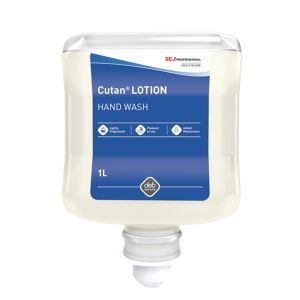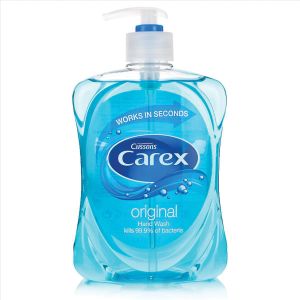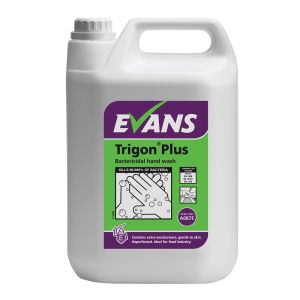Hand Hygiene: Step 1 - How to Wash Your Hands
For many of us, our hand washing technique may not perhaps be on top form – to maintain a high standard of personal hand hygiene in an environment where cross contamination must be kept to a minimum.
Human hands come into contact with a huge number of germs and bacteria so it’s important we carefully scrub and clean every crease and crevice. Fingernails, creases in our palms and in between our fingers are harbourers for germs.
Hand hygiene encompasses a 3-step procedure: Hand washing, Hand sanitising and Hand moisturising. In this guide we will look at the first step – Hand washing.
We have broken down the best hand washing techniques in a step-by-step format to ensure that next time you go to wash your hands you follow this, so they are as clean as possible.
How long should cleaning your hands take?
On average you should spend between 40 – 60 seconds to complete these hand washing steps.
Before you Start…
Take off all rings, watches and bracelets before you begin washing your hands and leave them off for whatever task you are carrying out.
Bacteria can get trapped beneath rings and in the grooves of watches, which will undo all the hand washing you are about to carry out.


Step 1 - Wet hands
Turn the tap on and wet your hands.


Step 2 - Apply soap
Take a teaspoons’ worth of soap and apply this to the palm of your hand. Rub into a lather. Work this into the palms and in between the fingers.
If you are working in a surgical environment, the soap used must meet the European Standard EN12791.


Step 3 – Rub hands palm to palm


Step 4 – Rub back of each hand with the palm of the other hand with fingers interlaced


Step 5 – Rub palm to palm with fingers interlaced


Step 6 – Rub back of fingers to opposing palms with fingers interlocked


Step 7 – Rub each thumb clasped in opposite hand using rotational movement
Thumbs are regularly missed by people when washing their hands so make a conscious effort to clean these.


Step 8 – Rub tips of fingers in opposite palm in a circular motion


Step 9 – Wash up to your wrists
Cover the outside of your thumbs then work the soap up to your wrists.
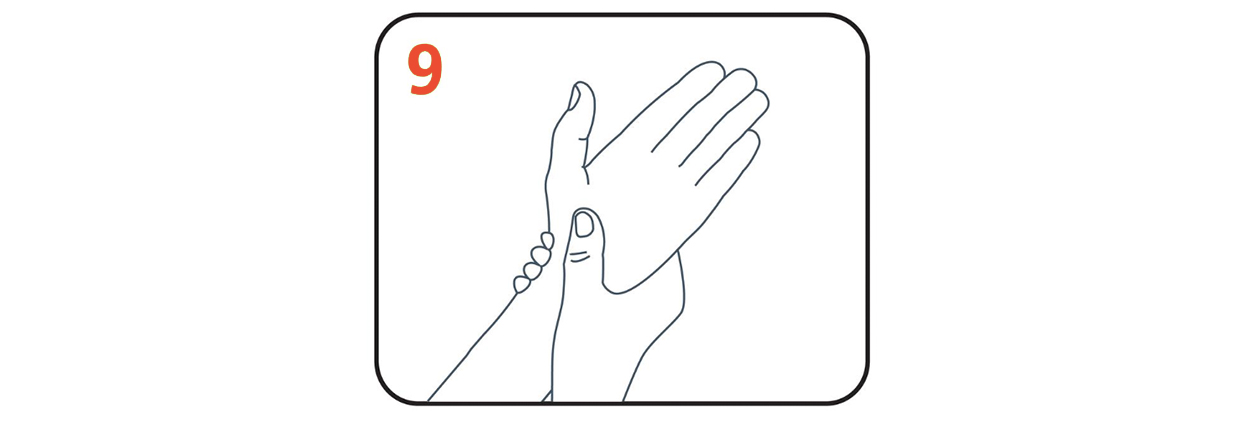

Step 10 - Rinse your hands
Rinse your hands thoroughly, ensuring all soap is removed.
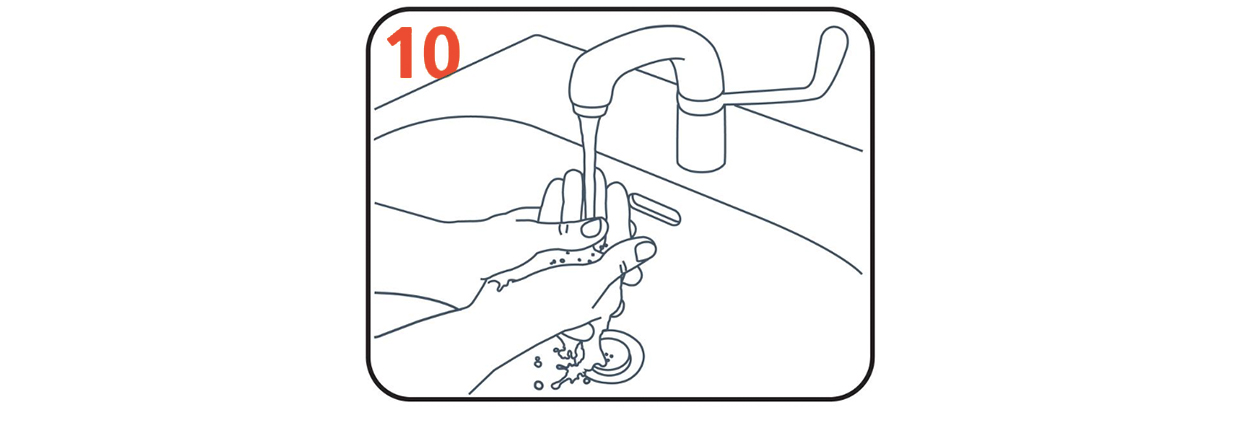

Step 11 – Turn off tap
To maintain infection control turn off taps using your elbow (if possible) or use a paper towel as a barrier.
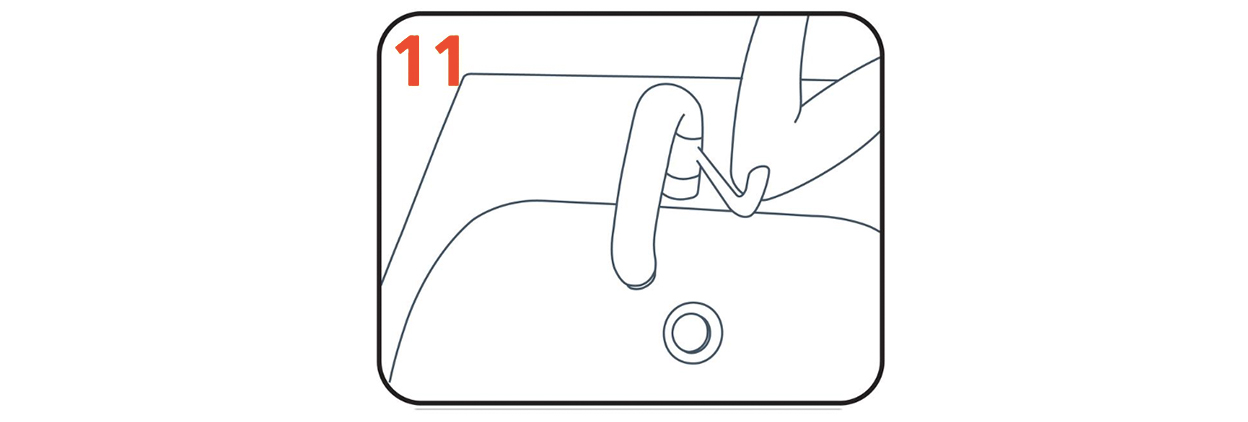

Step 12 – Dry hands thoroughly using a paper towel
Pull the paper towel out of the dispenser, being careful not to touch the dispenser itself. Dry your hands – get in between your hingers and the backs of your hands.
Ensure you use the foot pedal of the bin to raise the lid, do not touch this with your hands. Dispose of the paper towel.
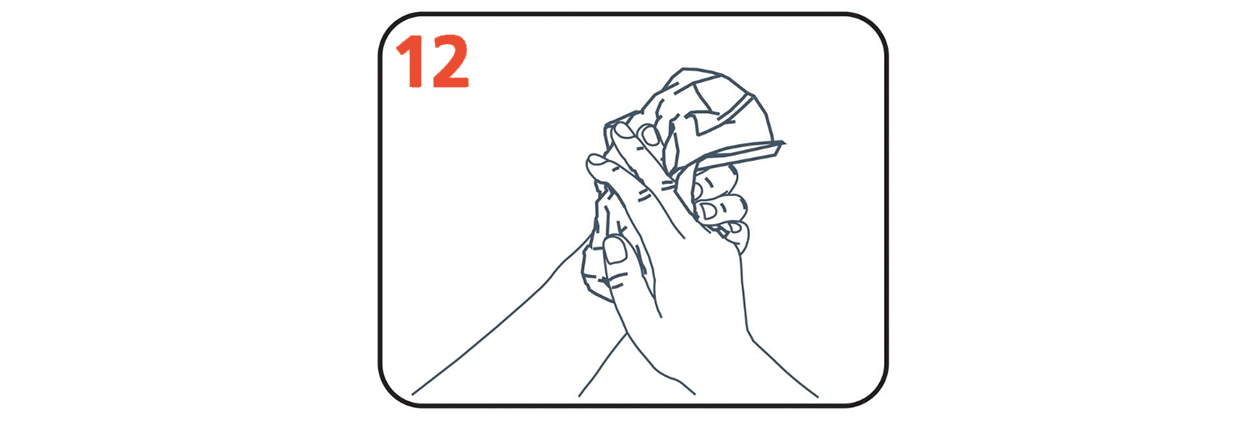

Tips for Cleaning Fingernails


Fingernails can become very dirty and so you may need to do a little more to get these lean and ready for any sensitive tasks. Here are some tips to bear in mind:
• Keep fingernails short
Shorter nails mean less dirt can gather underneath.
• Use a nail brush to clean around cuticles
This will pull out any stubborn dirt that can sit in and under cuticles.
• Use a nail pick to pull out any dirt under the nail
Nail picks can remove stubborn dirt but be careful as they can be sharp.
When should you wash your hands?
As well as before carrying out tasks that require a high standard of hand hygiene,, you should also ensure you wash your hands when:
• You have used the toilet
• Before and after preparing food
• When you have handled raw food such as meat
• You have touched or removed waste
• You have blown your nose, sneezed or coughed
• Before treating and after treating a wound
• You are about to eat
• You have handled money
• You have dealt with someone who is sick
It’s important to keep your hands washed regularly throughout the day. If you cannot remember when they were last washed, then this means they need cleaning.
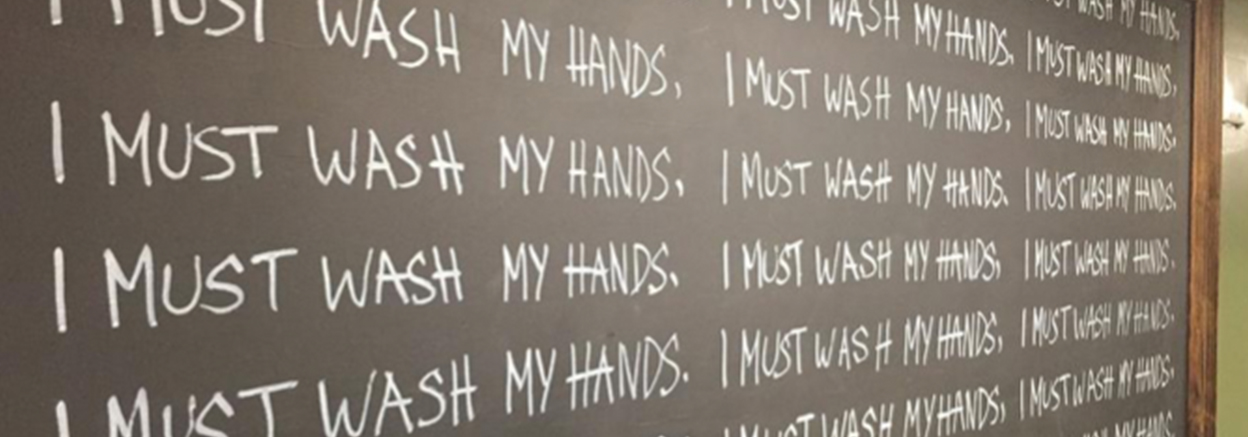

Following these steps will ensure you maintain a high level of hand hygiene at all times in the workplace. This will reduce the likelihood of infections spreading or cross contamination occurring and keep staff safe and healthy.



